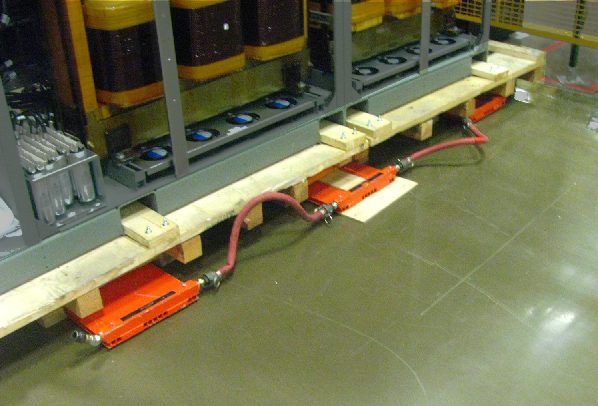 |
| Air casters on a production line for heavy electrical cabinets |
Background
Traditional wheel casters must be turned in the right direction before the load can be moved, and often require forceful and frustrating effort to try to move a load if the caster is in an orientation where it won’t move. Standard wheel casters can make it difficult to position a load precisely. In contrast, air casters offer several advantages, typically (a) less effort to move, (b) easily moved in any direction, and (c) positioned very precisely.
Terminology: Alternative terms include: air bearings, air pallets, air lifts, air floatation cushions, and air glides, dollies, and pads.
Objectives
Move heavy loads with minimal manual exertion.
Ideas and Options
An internet search for “air casters” and “air pallets” leads to dozens of vendors and websites that show hundreds of innovative applications. It is well worth a search to see the widespread applications.
Air Pallet (or Air Jack)
 |
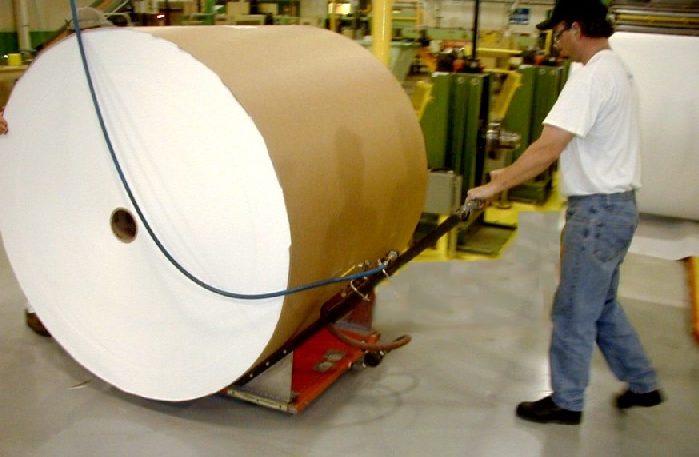 |
| Air pallet enables easy movement of heavy roll of paper | |
A common use of air floatation technology is an air pallet. In the photos above, the orange platform rests solidly on the floor. When the lever on the air hose is turned, air is forced out from holes under the pallet against the floor, providing a thin cushion that makes the movement essentially frictionless.
Heavy loads can be moved with remarkable ease. The device can turn within its own footprint and moved sideways when needed. The air floatation eliminates the forceful initial push to orient wheels on standard casters. Furthermore, the load can be positioned very precisely, which can be difficult using ordinary wheel casters.
Air Casters
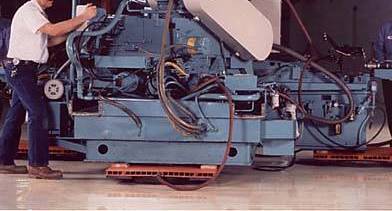 |
   |
| Temporary air casters for relocating heavy machine | |
The casters can be either attached or temporary use or permanently. The photo shows a temporary system for relocating equpment. The schematics show how an air bag is placed under a surface, air pressure applied, and the lift created. (www.aerogo.com).
 |
| Permanent casters on heavy machine (moved frequently between two production lines) |
Air casters can be used to lift almost any load, as long as there is a good surface on which to create the thin cushion of air to provide the lift.
Common adaptations
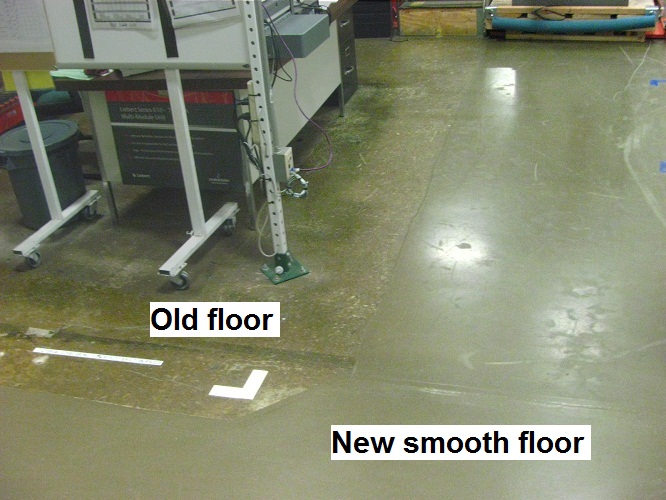 |
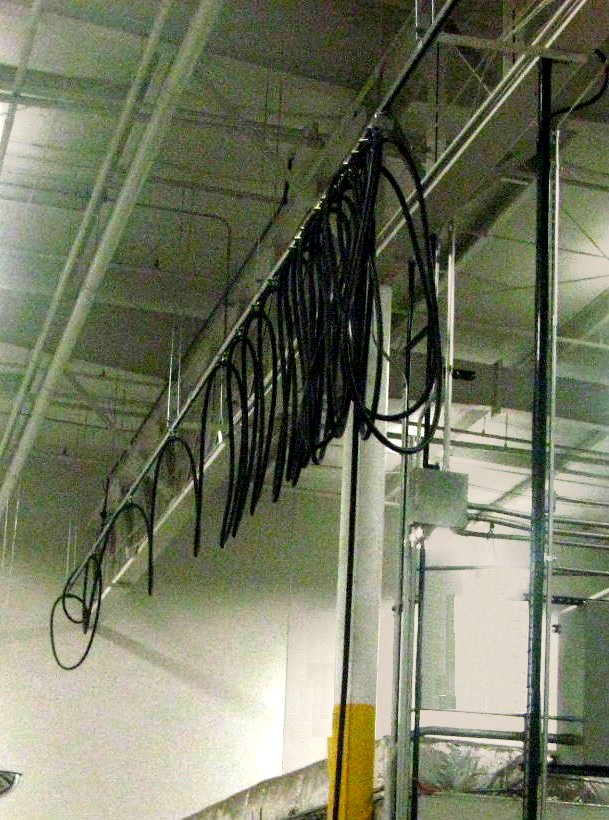 |
| Coating on old floor to create smooth path | Long air hose on overhead track above the path |
A smooth floor surface is usually required and it may be necessary to add a coating or make related repairs. It may not be necessary to coat an entire floor, since a narrow “runway” or path may be all that is needed.
An air hose is needed to power the casters. A good approach is to suspend the hose overhead.
Background on the technology
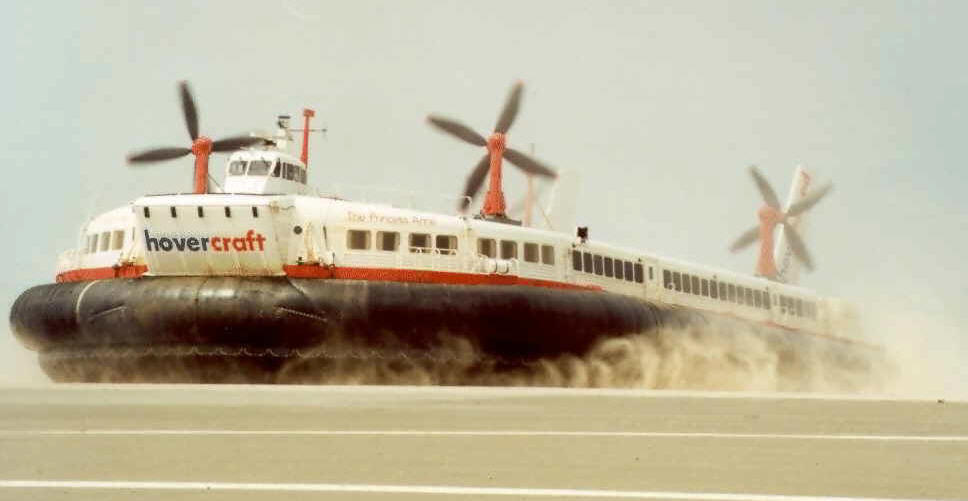 |
| Hovercraft |
These industrial material handling devices are based on technology long used for hovercraft, where extremely large and heavy vessels can float on a cushion of air even at high speeds. Hovercraft motors and air systems are considerably larger than those used in industry, which permit use on uneven surfaces such as water and beaches.
Air is surprisingly powerful when compressed and can be used in additional ways, such as air conveyors and air tables.
